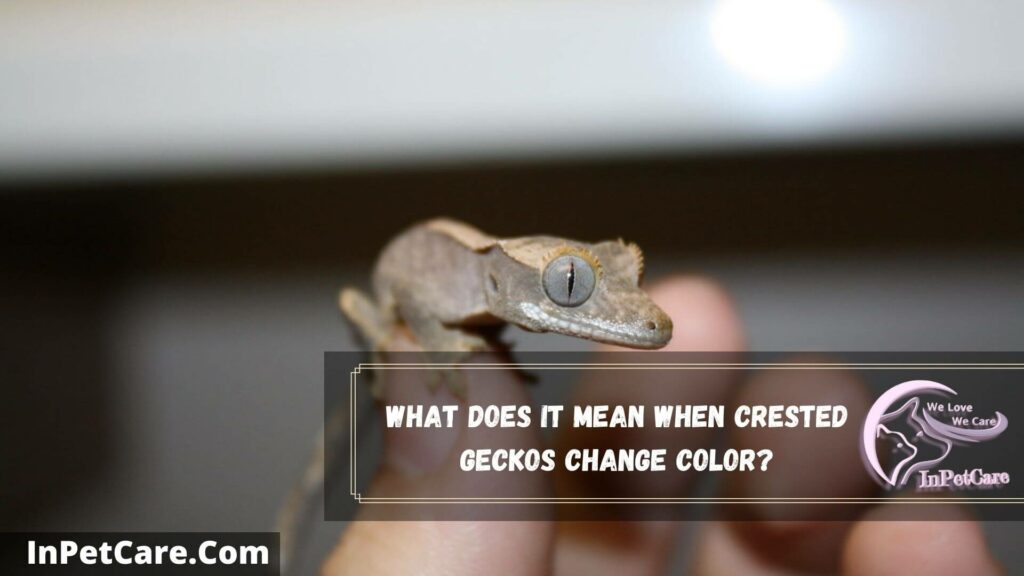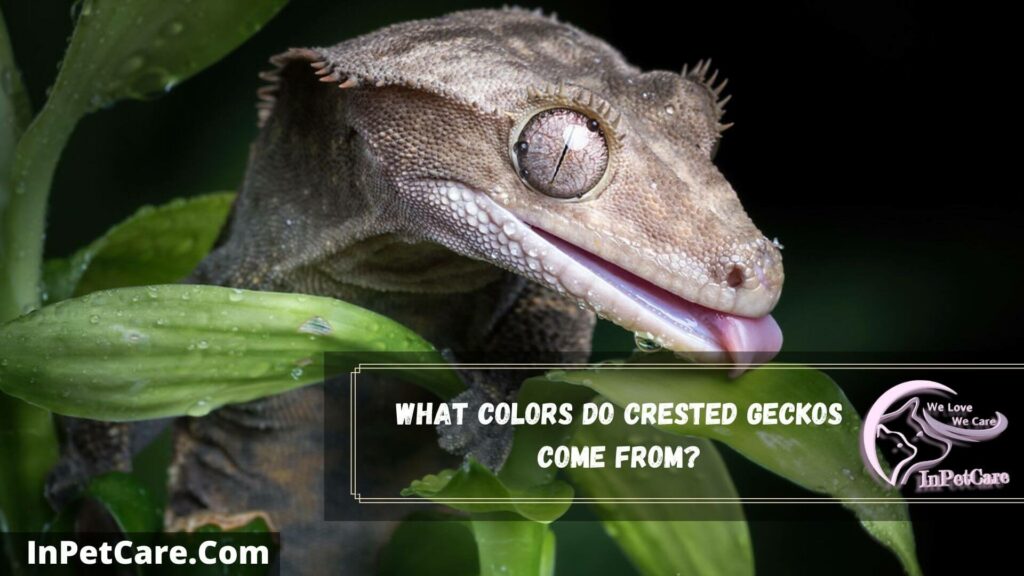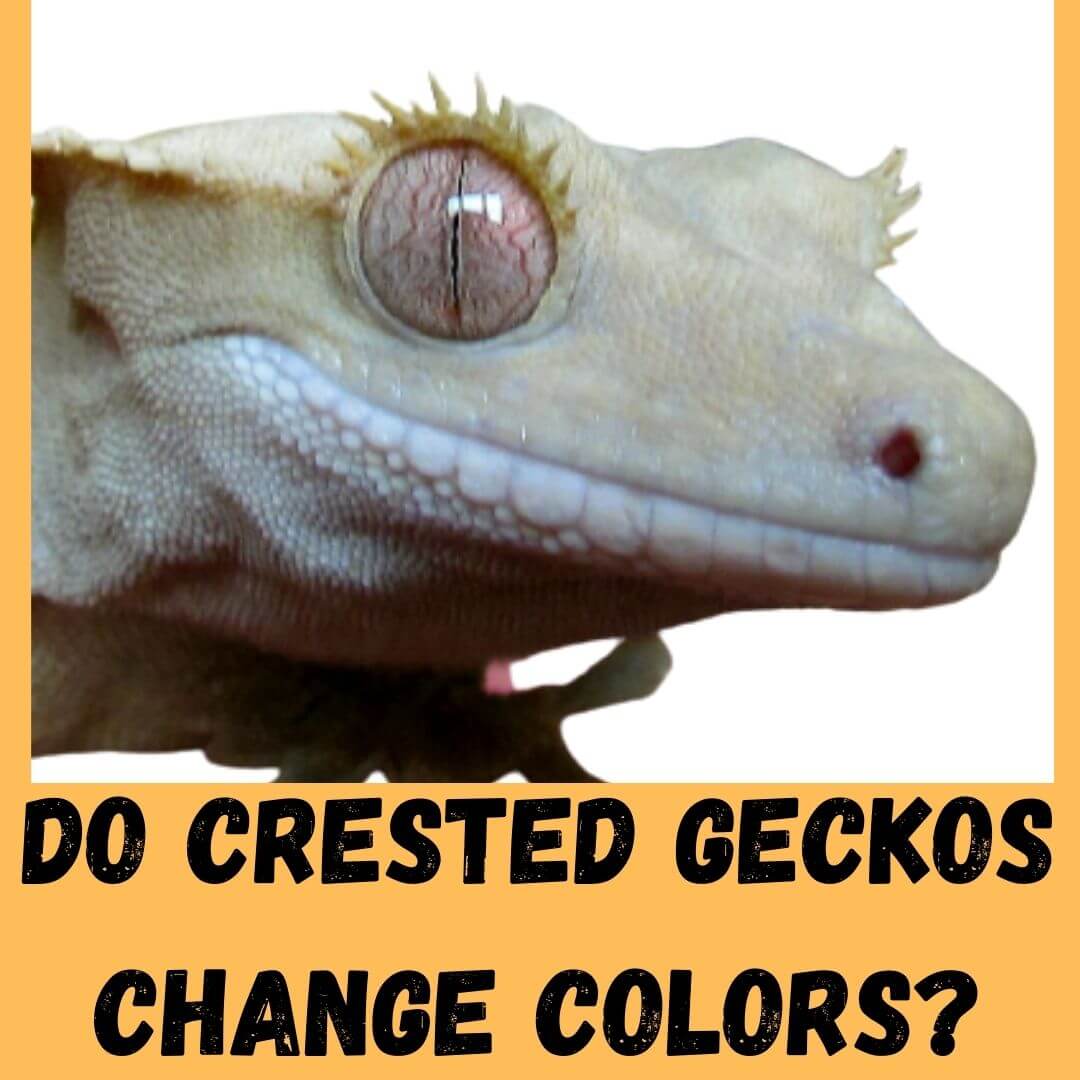Crested geckos are unique creatures, and their skin color is so attractive that many reptile enthusiasts prefer keeping them as pets. However, sometimes we often get confused when we see something unusual happening in our pet.
Some owners may also get concerned. One such event can be a change in color to your pet. Here, we are going to answer a fascinating question: do crested geckos change colors? If so, why do crested geckos change colors?. In this post, we will discuss everything in-depth about their color change. Let’s first know: can crested geckos change colors?
Post Contents
Do Crested Geckos Change Colors?
Yes, crested geckos can change color depending upon the environment, health, age, and time of the year. Some species of geckos are even capable of camouflaging themselves when blindfolded.
Many of us get surprised when we see our gecko changing its color. You might be wondering why does a crested gecko change colors. After knowing yes, it can, and it still raises a meaningful question.
These stunning creatures come in different colors and patterns, but we must first learn to change their color without even seeing the environment bloom.
How Do Crested Geckos Change Colors?
Being small lizards, crested geckos change their color using light-sensitive receptors situated on their torsos’ bottom. These receptors help crested geckos and other species to mimic their color to the shade below them. It is one of their camouflaging techniques.
The actual color that you see changing in your crested gecko’s body occurs when its cells filled with different pigments across the body expand or contract. These cells help Crested Geckos color extremely fast.
So after knowing how crested geckos change their colors so fast, we will answer the question of why do crested geckos change colors?
Why Do Crested Geckos Change Colors?
- Due To Surrounding Environmental changes: A sudden change in humidity or temperature inside their tank can make your crested gecko change its colour. A threatened gecko will also change its colour.
So, make sure to look down on its enclosure and check if something is provoking them. A live insect left uneaten can hide, grow and encourage your lizard to change its color.
- Age: It is typical for crested geckos to change in colour with age. Crested geckos tend to change in a darker colour with age. You might have noticed crested geckos hatchling being bright red/orange then turning/fading its colouring slowly and slowly to what it’s supposed to look like finally.
Adult crested gecko should be around 15 grams and should have achieved its coloration to what it should look. A 15 g or 12 months old gecko is considered an adult. Adding to that, it is common to notice a few spots appearing later in their life with age.
With age, some may become more defined in terms of marking, while some may fade. Fortunately, don’t worry about losing their beauty because they don’t have their stripes color completely; it just becomes lighter.
If your crested gecko markings and stripes are orange, you will likely see it turning brown or dark yellow.
- Due To Shedding: Crested geckos will also turn grey or pale if they are shedding. It is usual for lizards to shed their skin and grow back new ones.
- Due To Bacterial Infections: Bacterial infection or fungal infection can also get your crested gecko black spots different in colouration compared to its body. If this is so, get them checked at your nearest veterinarian
- Due To Necrosis: A dangerous health threat like necrosis can give you black lizard colour in their toes or tail, requiring sudden medical treatment.
- Mood: A crested gecko can also fire up or fire down depending upon its spirit, which can also cause it to change its colours.
- Due To Hunting: Due to Survival instinct, during hunting, they also turn their colour bright or dark depending upon the situation. You can call it their colour changing tactic for better hunting in the wild. In captivity, crested geckos can also change their colour when fed live insects one at a time.
What Does It Mean When Crested Geckos Change Color?

Crested Geckos Turning Black: if you want to know why is my crested gecko turning black, you should see a change in its coloration with age is average. However, if a crested gecko’s toes/tail turns black, it needs severe medical treatment. Necrosis turns the lizard’s tail and toes black.
If you see black spots on their body, it can be due to bacterial or fungal infection. Black spots that are not part of crested geckos’ body coloration and their toes or tail turning black indicate serious health problems.
Visit your veterinarian for professional help, guidance, and treatment.
Crested Geckos Color Fading: So, why is my crested geckos color fading. Crested gecko skin color can disappear when they are shedding. During shedding, geckos skin usually turns grey/pale in color. If your crested gecko is turning grey, it means they will start shedding soon.
Crested Geckos Dull In Color: A gecko that is fired down will look dull in color. Hence, relaxed or anxious geckos often look light in color. However, depending upon their mood and being stressed, they can fire up or down.
Crested Geckos Bright In Color: Crested Geckos fired up will always look in their brightest color. Many factors can trigger your gecko to fire up.
Their mood, humidity, temperature, tank surrounding, being anxious, and many more are such factors that commonly make geckos fire up or fire down.
What Color Are Crested Geckos In The Wild?
In the wild, crested geckos are available in many colors. They are naturally occurring color group lizards having shades of brown, orange, yellow, red, and grey.
They usually have three color morphs which include white-fringed, tiger, and patternless. Their size typically ranges around 6-10 inches in length. Their tail size will be half of its body length.
One of the most distinctive features of these geckos that attracts many reptiles and lizards enthusiasts is its hair-like projection situated above its eyes which looks like eyelashes.
What Colors Do Crested Geckos Come From?

Crested geckos come in all shades between chocolate, dark black, red, olive, and yellow. They may also have different types of spots, patterns and stripes deriving from each gecko to gecko.
They are available in many colors and devoid of stripes but tend to have no color variation.
FAQ
What Is The Rarest Crested Gecko Morph?
Red tigers crested gecko, a flame crested gecko with tiger patterning, solid back, dalmatian pinstripe pattern in the creamsicle morph, cream on cream morph, and dark fire are some rare crested geckos morph.
What Is The Most Common Crested Gecko?
Tiger crested gecko is the most common crested gecko famous and is named for its popularity and tiger stripe pattern. They also come in many variations of color, but that dorsal tend to be filled with dark color bands sliding down towards their body.
What Colors Do Crested Geckos See?
Due to the absence of any legitimate source and no scientific research done on the crested geckos color vision, it is assumed that they carry photopigments only sensitive to blue, green & UV.
Final Thoughts
Wrapping Up: Crested Geckos and their other species tends to change their color for many reasons. Anxiety and stress can also lead them to change their color. While being fired up or fired down, they also change their color. Crested geckos can see only colors limited to Blue, Green, and UV.
The claim is only assumed because there has been no scientific research done on its vision. Crested geckos are available in many different color shades with different morphs, types, and patterns.
There was a time when crested geckos were thought to be extinct but now are extensively available. However, some crested geckos morphs are very rare and even illegal to have in some states.
I hope I have given you all the information needed on why do crested geckos change colors? If you have any questions regarding crested geckos or their color. Feel free to ask in the comment section. I hope I will get to help you with another article as well till then, take care and goodbye.

94% of pet owners say their animal pal makes them smile more than once a day. In 2007, I realized that I was made for saving Animals. My father is a Vet, and I think every pet deserves one. I started this blog, “InPetCare”, in 2019 with my father to enlighten a wider audience.
